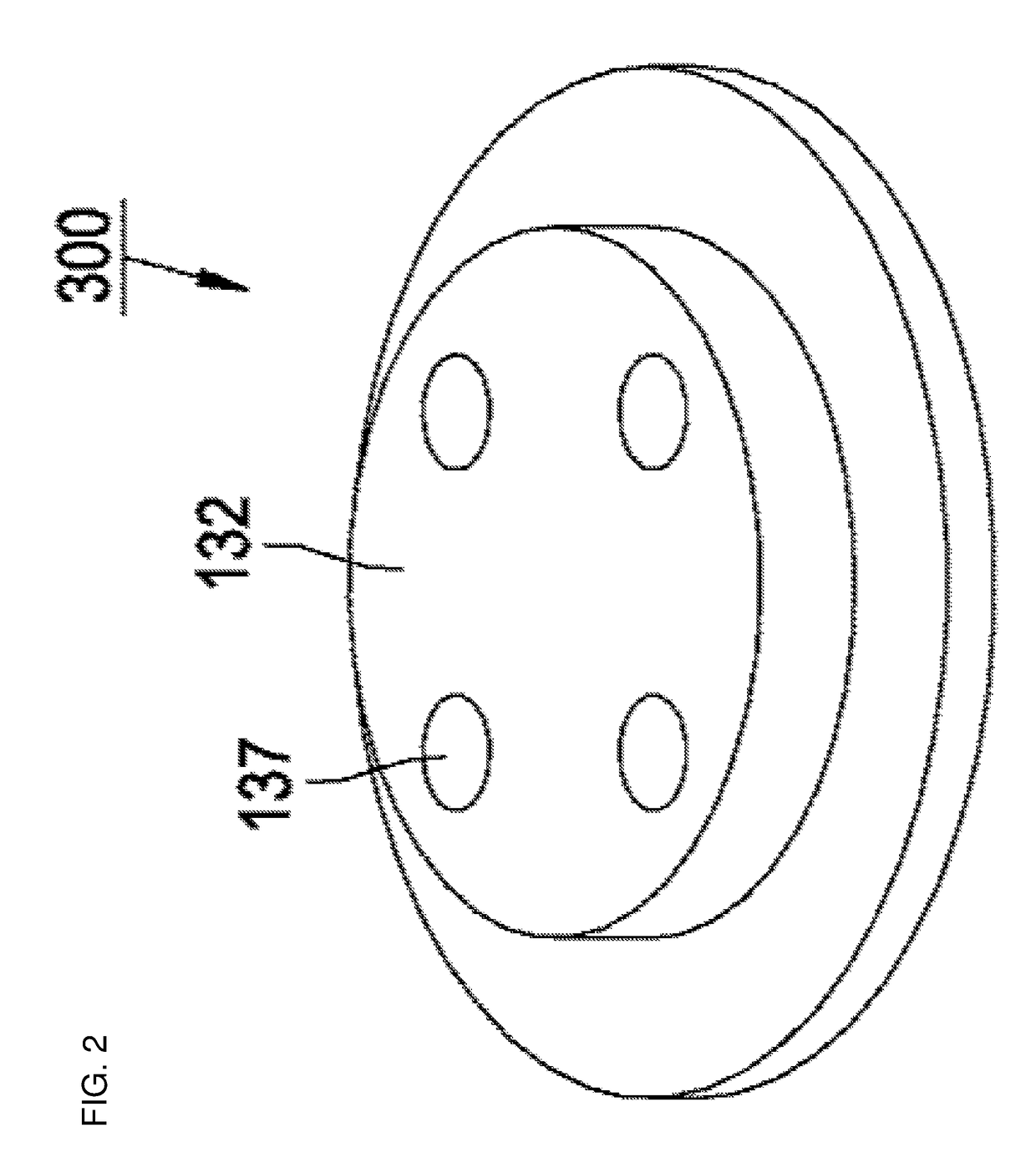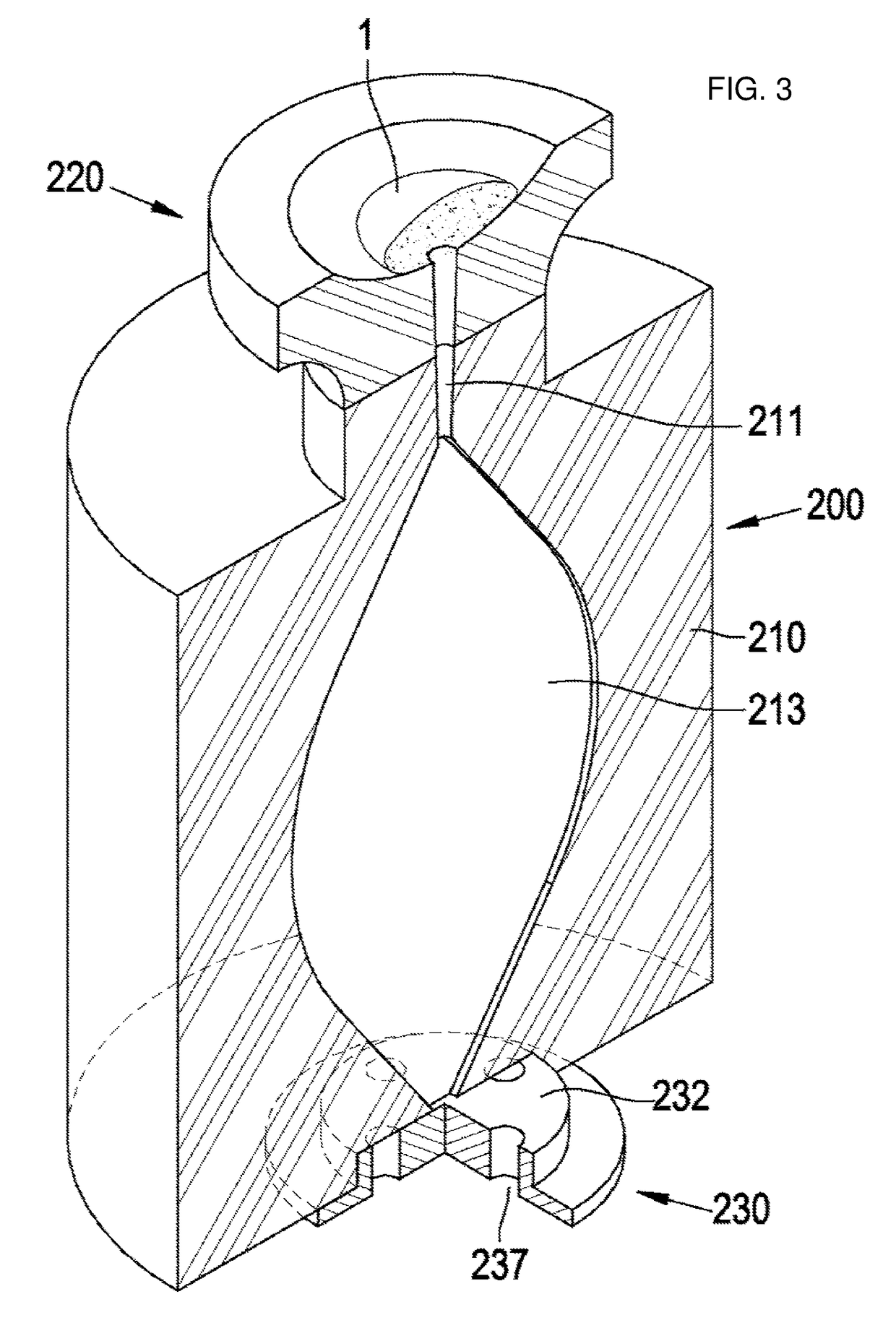Casting mold for metal sheet
a metal sheet and mold technology, applied in the direction of manufacturing tools, foundry molds, foundry patterns, etc., can solve the problems of rapid cooling of molten metal, severe level of casting defects in casted alloy specimens, and inability to casted amorphous metal sheets
- Summary
- Abstract
- Description
- Claims
- Application Information
AI Technical Summary
Benefits of technology
Problems solved by technology
Method used
Image
Examples
first embodiment
[0081]FIGS. 4 to 7 are views of a casting mold according to the present invention, in which FIGS. 4 and 7 are longitudinal sectional views of the casting mold, and FIGS. 5 and 6 are perspective views illustrating a lower mold and a state in which a ring is mounted in the lower mold.
[0082]FIGS. 8 and 9 are photographs of a prototype of a metal sheet casted by using the casting mold according to the first embodiment of the present invention, and a graph illustrating a result of measuring an X-ray diffraction pattern.
[0083]FIG. 10 is a perspective view of a modified example of the ring illustrated in FIG. 6.
second embodiment
[0084]FIG. 11 is a cross-sectional view of a casting mold according to the present invention.
third embodiment
[0085]FIG. 12 is a perspective view of a casting mold according to the present invention.
[0086]FIG. 13 is a longitudinal sectional view taken along line A-A in FIG. 12.
[0087]FIG. 14 is an enlarged view of part ‘B’ in FIG. 13.
[0088]FIGS. 15 to 17 are enlarged views of part ‘C’ in FIG. 13 and illustrate various modified configurations.
PUM
| Property | Measurement | Unit |
|---|---|---|
| arc angle | aaaaa | aaaaa |
| thermal insulator | aaaaa | aaaaa |
| shape | aaaaa | aaaaa |
Abstract
Description
Claims
Application Information
 Login to View More
Login to View More - R&D
- Intellectual Property
- Life Sciences
- Materials
- Tech Scout
- Unparalleled Data Quality
- Higher Quality Content
- 60% Fewer Hallucinations
Browse by: Latest US Patents, China's latest patents, Technical Efficacy Thesaurus, Application Domain, Technology Topic, Popular Technical Reports.
© 2025 PatSnap. All rights reserved.Legal|Privacy policy|Modern Slavery Act Transparency Statement|Sitemap|About US| Contact US: help@patsnap.com



